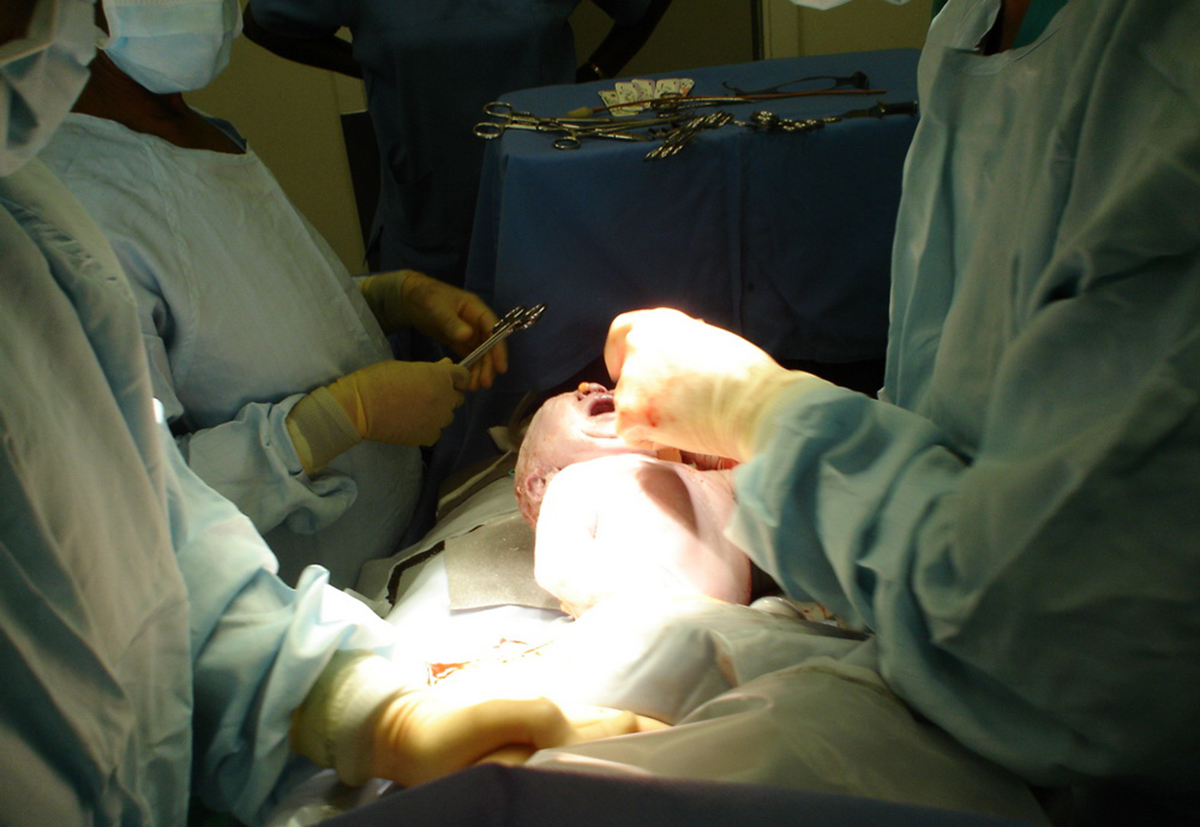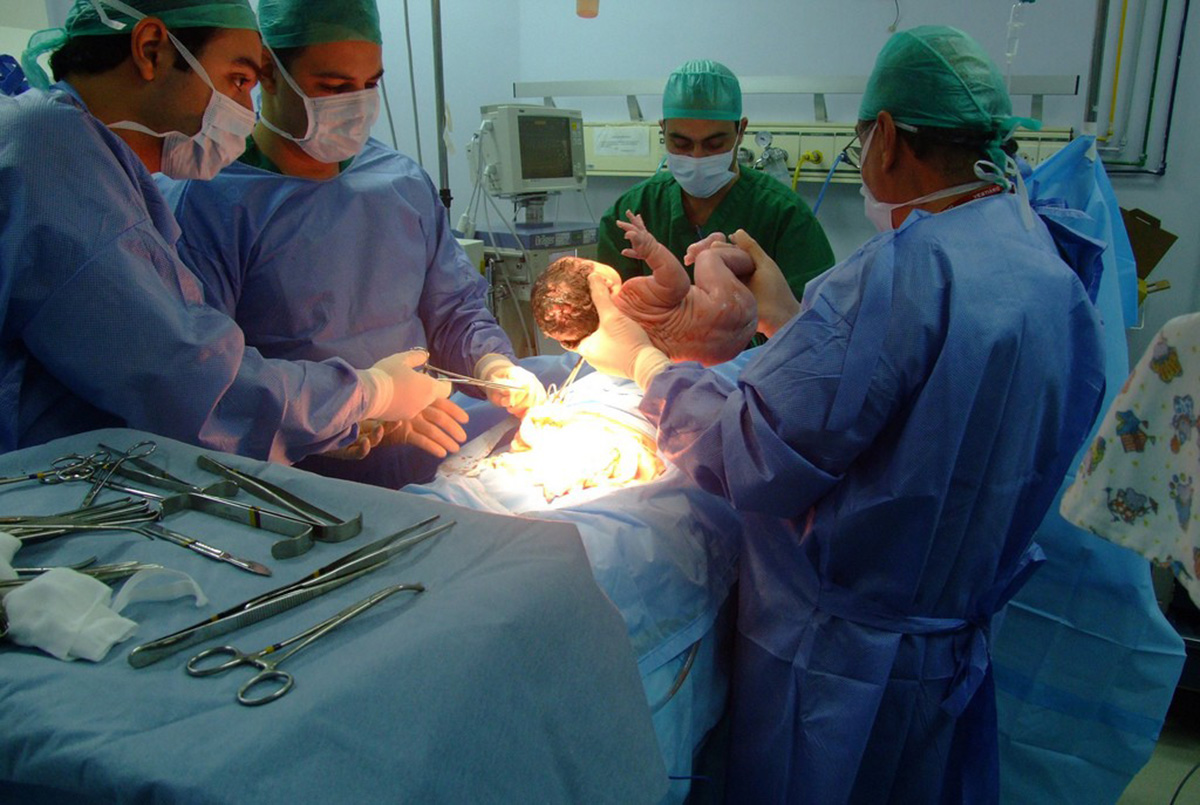The act of giving life through childbirth is a true blessing, and many women would not trade this experience for anything in the world, that is for sure — because they walk away from the experience with a new baby. However, when it comes to choosing a method for delivery, women’s opinions are divided based on their personal preferences, preconceptions, their medical needs, and for some, based on their previous labor and delivery experiences.

Vaginal Delivery: Our default Option
From the beginning of times, women have been giving birth vaginally and because a natural, intervention-free vaginal birth is simply what happens in the absence of other steps, it's kind of the default.
For some women, the primality of vaginal birth makes the experience much more meaningful and rewarding. In some way, we could say that the beauty of vaginal delivery comes from the fact that through its port of entry does the baby exit. And despite the pain of labor and all the other negative feelings that a woman would experience when the time to deliver is nigh, it ends up being worth the road.
Health Benefits of Vaginal Delivery
Vaginal delivery comes with several advantages. First of all, you are an active part of the experience: you push, so the baby could be delivered, and your effort will give you an indescribable sense of reward at the end. Secondly, you know for sure that you will not have to deal with all the pre-operative and intra-operative procedures, and while you are at it you could even pass on the post-operative complications.
Because you are back on your feet much earlier, you will have more time to bond with your child immediately (holding, touching, cuddling, breastfeeding, etc.), a privilege that you wouldn’t get following a cesarean delivery (given that for the first 18 hours, you might be resting, sleeping, and recovering from surgery.
Some other health benefits of vaginal delivery include a lower risk of infections for the fetus, and lower risk of respiratory problems.
However, many women would still opt for a cesarean delivery, and this for several reasons. For some, it is by fear of all the complications associated with vaginal birth such as urinary incontinence, perineal tearing, and temporary decrease in sexual function, just to name a few. Even though the majority of cesarean deliveries are by choice, sometimes they are medically indicated.
See Also: Vaginal Birth After C-Section - When Is It Safe?
When Cesarean delivery is necessary
Although the majority of deliveries by cesarean are elective (which means there is no medical need, nor even a medical recommendation, and it is only by choice, there are few essential and critical cases in which cesarean delivery is absolutely necessary, and these include:
- When the life of the mother is compromised: sometimes, the pregnancy is extremely strenuous on the body and the mother is unable to go into labor. When such situation is detected, the doctor would recommend a cesarean delivery, given that the life of the mother might be at risk. Additionally, in pregnancies complicated by gestational diabetes, pregnancy induced hypertension, pre-eclampsia or eclampsia, the life of the mother could be at risk and there might be further complications during natural labor, which is why a cesarean delivery might be indicated.
Medical Indications Of Cesarean Delivery
- When the life of the fetus is compromised: in instances where the placenta is abnormally located (placenta previa, placenta accreta or an abrupted placenta, which detached from the uterus before the baby is born), there is a high risk of fetal distress, and as a result delivery should be imminent. Thus, an emergency or planned cesarean delivery will be indicated. Additionally, there are other complications such as cord compression (where the umbilical cord is wrapped around the baby’s neck and is at risk or is compressed) that could warrant a cesarean delivery. The position of the baby is also an important factor. In a breech position (where the head of the fetus is not oriented towards the internal cervical os or if the baby is in an oblique position), vaginal birth is possible, but associated with a higher risk. Thus, cesarean sections are routinely recommended in most countries.

- Failure to progress in labor: sometimes, a vaginal delivery could progress into a critical situation requiring a cesarean delivery. For instance, if a mother enters into labor and is stuck in the second stage of labor without further progression, there is an increased risk of fetal hypoxia, and to avoid that the doctor could choose to proceed surgically. Another situation could also be a problem in the first stage of labor. If the cervix fails to dilate to 10 cm in a considerable period of time, cesarean delivery may be indicated if medications designed to speed up and strengthen labor contractors do not work.
With that said, we can understand that sometimes, a cesarean delivery is indeed needed. However, it is not without consequences, as this type of delivery comes with its share of complications.
Cons for having a Cesarean Delivery
Above all things, a cesarean delivery is a surgical procedure, and just like any other operation it comes with its risks. First of all, there are complications related to anesthesia: failure of anesthesia, headaches, vomiting, allergic reactions, etc. Additionally, the anesthetics could also cross the placental barrier and inhibit the child’s respiratory system, making it more difficult for him/her to respond to stimulation at birth. Also, because it is an invasive abdominal surgery, consider the post-operative scar, abdominal pain and discomfort, longer hospital stay due to a longer recovery time.
And as the wound heals, uterine adhesions (scar tissue) will also form around the pelvic area. This could make your abdominal organs stick together and cause severe abdominal pain in the future. The risk of uterine adhesions increase to 83 percent in women who have had 3 or more cesarean deliveries.
Needless to say, cesarean deliveries also poses possible complications for the baby. The principal problem that cesarean babies could experience after birth is respiratory distress. This is due to the fact that through vaginal delivery, as the baby is pushed outside the uterine cavity, the lungs are squeezed and the amniotic fluid present in the lungs can be expelled, thus facilitating the breathing.
See Also: Cesarean Delivery Risk Factor
If I have the options, which one should I choose?
The American Congress of Obstetricians and Gynecologists recommends vaginal delivery over cesarean birth in situations where a c-section is not medically necessary. In other words, it recommends against purely elective c-sections. The first and strongest argument for this recommendation is the fact that cesarean deliveries require a longer hospital stay and harbor many more complications (both for the mother and the fetus) compared to vaginal birth. With that said, do your part, and let Mother Nature do its own!
- Photo courtesy of kerrynd by FreeImages : www.freeimages.com/photo/726035
- Photo courtesy of SantaRosa OLD SKOOL by Flickr : www.flickr.com/photos/santarosa/3003869525
- www.womenshealthcaretopics.com/VaginalBirthvsCesareanSection.html
- www.acog.org/About_ACOG/News_Room/News_Releases/2013/Vaginal_Delivery_Recommended_Over_Maternal-Request_Cesarean
- www.bellybelly.com.au/birth/caesarean-section-or-vaginal-birth#.U2GXxPl5Ngg
- www.babycenter.in/a1024955/vaginal-delivery-versus-elective-caesarean---pros-and-cons
- www.ncbi.nlm.nih.gov/pmc/articles/PMC3110651/


Your thoughts on this